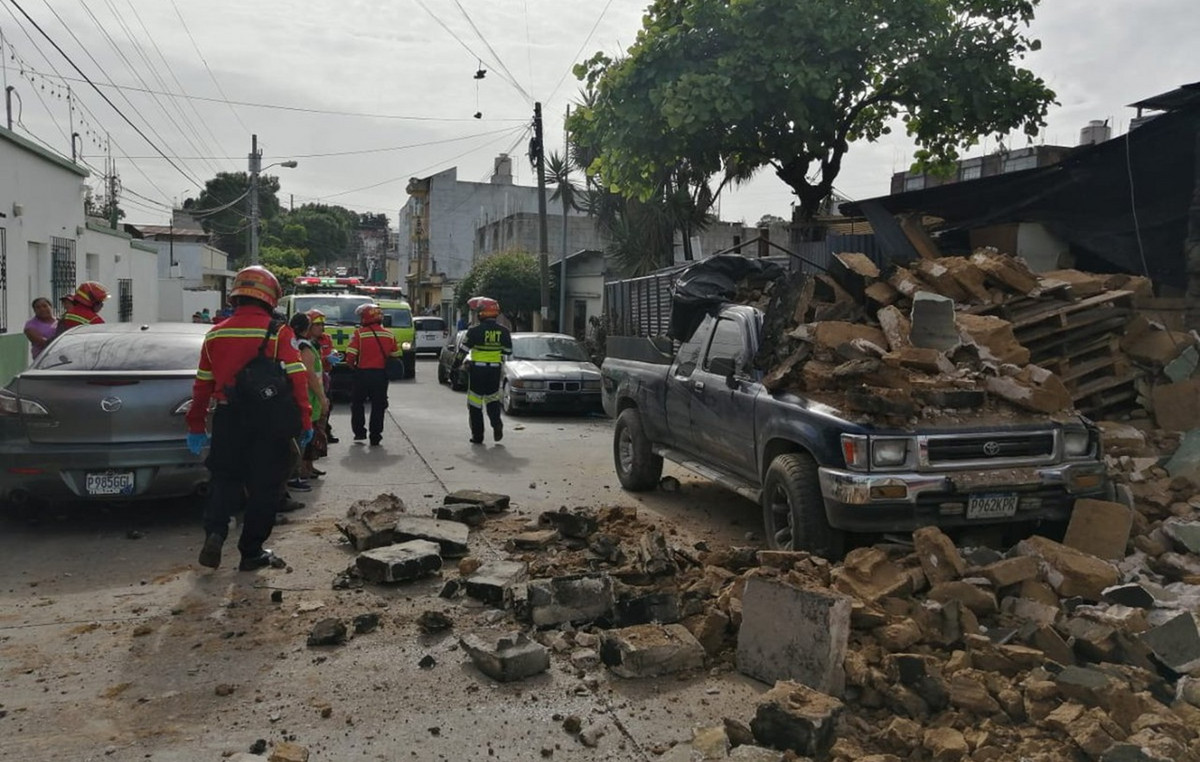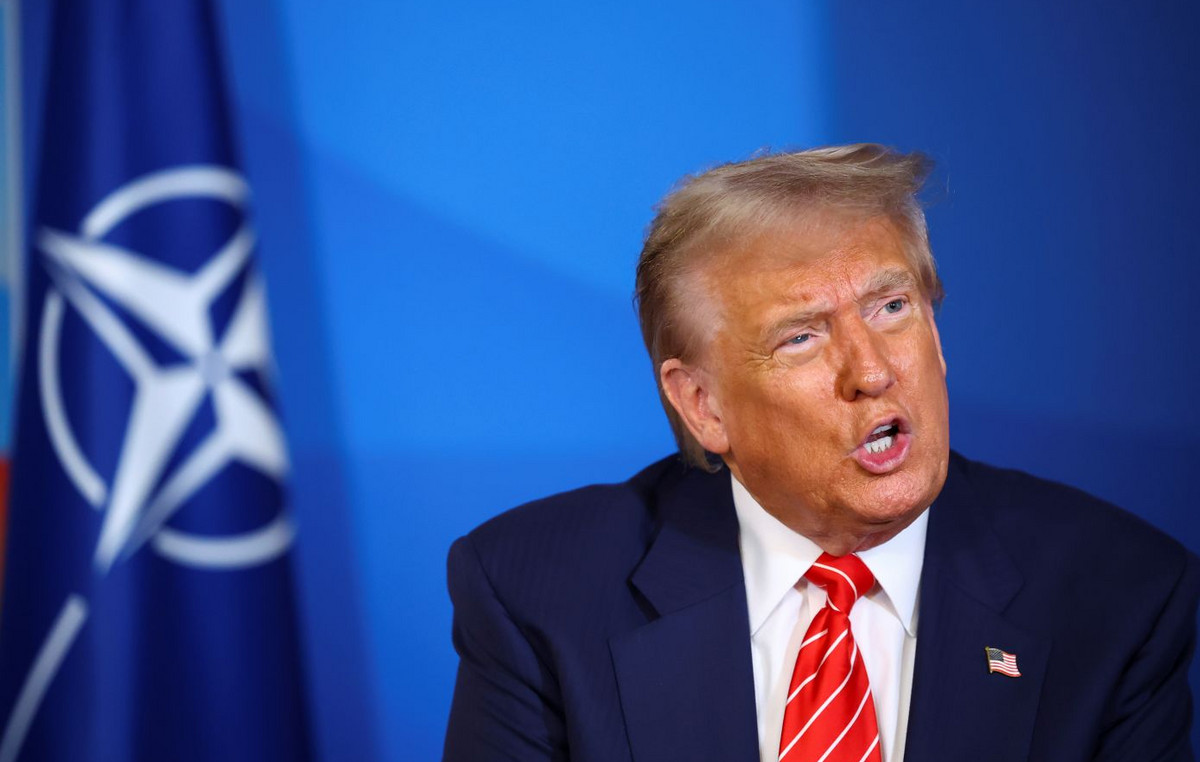“Listen now to the sound that forever separates the old from the new.” That’s how the North American radio NBC introduced the signal of the first satellite into space, on October 4, 1957, in the United States.
But the novelty wasn’t a triumph of American science: the sound came from the Soviet Union’s Sputnik, a piece of hardware no bigger than a volleyball whose launch stunned the world – and the United States in particular.
The expression “Sputnik moment” was coined to mark the occasion. It expresses the shock at the loss of a supposed superiority, the technological leap of a rival that could destroy the balance of nuclear power.
Then-President Dwight D. Eisenhower said he was “not at all” concerned about Sputnik, but public and political reaction in the United States was less optimistic. “Russian science has defeated American science”, the newspaper “Boston Globe” wrote.
Last week, the Chief of Staff of the United States Armed Forces, General Mark Milley, recalled the “Sputnik moment” when commenting on the Chinese tests with one or more hypersonic missiles that took place in the middle of this year.
“What we saw was a very significant event of a test of a hypersonic weapons system. And it’s very worrying,” Milley said. “I don’t know if it’s ever going to be a Sputnik moment, but I think it’s pretty close.”
China says it has done nothing more than launch a reusable space vehicle. Based on these tests alone, it is difficult to determine Chinese intentions. The country has invested massively in missiles and space capabilities in recent years, while developing conventional forces and cyber warfare.
In terms of national security, surprises and an inability to assess a threat are what keep senior management awake at night. In the past, in the case of Sputnik, both points – surprise and inability to assess – were fulfilled. The rapid development of hypersonic technology in China may be of a different order.
In the years following Sputnik, the US quickly surpassed the Soviet Union in satellite and space technology. NASA was created in 1958 and performed the first hypersonic test vehicle flight the following year. In 1960, the US had three times as many satellites orbiting the Earth as the USSR.
Parity was restored, despite some setbacks along the way. The first US response to Sputnik exploded at launch; in fact, the test of a hypersonic vehicle in October has now also failed.
So little is known about the Chinese program that it is almost impossible to assess whether a larger gap has opened up. Intelligence officials told the Senate Intelligence Committee at private briefings that the Chinese test marked a substantial advance in China’s ability to launch a first strategic strike against the United States, according to sources familiar with the meetings.
Other officials and experts are less concerned about the missile test and say that while it is intended to provoke, the technology doesn’t give Beijing an edge and therefore doesn’t destabilize the game.
The technology itself is not new: the US, China, Russia and other countries have been working on it for decades. Russia is developing a range of hypersonic weapons that President Vladimir Putin has boasted of being “invincible”.
What would be destabilizing is if one of the powers took a decisive lead in transforming hypersonic technology into weaponry.
Agility at low altitude
Hypersonic missiles are not as fast as ballistic missiles (although, reaching five times the speed of sound, they are far from slow). However, they travel at low altitudes and are maneuverable. As they can change targets during flight, they are difficult to detect and intercept. A 2017 report by the RAND Corporation organization noted that even “advocates with ground and space sensors will only have a few minutes to know that these missiles are coming.”
If an intercontinental ballistic missile (ICBM) were fired at a US target, about 25 minutes would elapse between detection and impact. Some analysts calculate that if a hypersonic weapon were used, the interval would be only 6 minutes.
To protect the continental United States from a hypersonic arsenal would require an inaccessible number of high-altitude defenses. And that presupposes much better defenses than those currently in place.
In addition, US anti-missile systems are focused on the Northern Hemisphere, but a highly maneuverable hypersonic missile in low orbit can be aimed over the South Pole.
Some experts point out that the era of hypersonic missiles is, for now, more theoretical than real. There is still a lot of engineering needed.
Ivan Oelrich, former vice president of the Federation of American Scientists, says that “hypersonic weapons will add some new military capabilities, but they will not revolutionize warfare.” Even so, the 2017 RAND report estimated that there would be ‘at most a decade before hypersonic missiles would become militarily significant’.
loss of innocence
The original Sputnik moment sparked a good deal of thinking in the United States.
Critics felt that the United States was slow to recognize and respond to the Soviets’ ambition to be the first to arrive at the
space. Both Lyndon Johnson and John F. Kennedy, then US senators, used the Sputnik moment to criticize American unpreparedness.
Johnson warned that the Soviet Union would be able to bomb the US with nuclear warheads like children throwing stones from an overpass.
Likewise, some critics today say the US has been slow to recognize the threat. “The Pentagon has failed to articulate the need and then manage the development of hypersonic weapons,” said Andrew Senesac of the National Defense Industrial Association. Sputnik encouraged spending on science education: the National Defense Education Act was passed in 1958.
It remains to be seen whether the rapid build-up of Chinese capabilities will inspire similar investments in the United States.
Sputnik also spurred large investment in satellite technology by both the United States and the Soviet Union. Humanity has benefited from its civilian applications (such as GPS and telecommunications) but, until 1990, about four out of five satellites in space were military.
Today, hypersonic technology is being developed in Australia and Europe for peaceful commercial applications, although much of this technology may have military value.T
Weapons control and defense
The Sputnik moment was important in two other ways.
The risk that space could upset the military balance eventually spurred an era of arms control agreements, as nuclear-armed ballistic missiles had the potential to annihilate an adversary.
Satellites became an important part of early warning systems that allowed humanity to live with “mutually assured destruction.”
But the specter of destruction has also spawned research into missile defenses, such as how to intercept and destroy incoming missiles. This effort reached its zenith with President Ronald Reagan’s Star Wars program in the 1980s.
China’s advances could rekindle the choice between exploring ways to defend against hypersonic missiles with nuclear weapons or trying to match Chinese and Russian offensive capabilities.
James Acton of the Carnegie Endowment for International Peace said the US “should offer to negotiate new limits on missile defenses, which it would only agree to if China and Russia offered very significant concessions in return.”
A large study by the RAND Corporation reached the same conclusion. “The inevitable demand is that the United States, Russia and China agree to a non-proliferation policy,” the authors wrote.
This could potentially usher in a new chapter in nuclear deterrence, as some would say Sputnik did.
There is an important caveat. In the decade following Sputnik, the United States and the Soviet Union developed channels of communication to try to ensure that the conflict did not start by miscalculation.
Today, there are few such channels with China, which is problematic when so many platforms can carry conventional or nuclear warheads.
money and knowledge
An unsurprising resemblance to the Sputnik moment is how these occasions whet the appetite for the need for high spending.
The Pentagon’s budget for research and development of hypersonic systems will increase next year to $3.8 billion (about R$21 billion). In October, Raytheon Technologies CEO Gregory Hayes said the United States was “at least several years behind” China in the development of hypersonic technology. Fareed Zakharia, in a piece in the Washington Post, said that “arousing fears about a huge, tech-savvy enemy is a
surefire way to secure vast new budgets that can be spent fighting every enemy’s move, real or imagined.”
“Real or imaginary” is part of the problem when it comes to hypersonic weapons.
To borrow a famous phrase from former US Defense Secretary Donald Rumsfeld: “There are things we know we know. We also know that there are unknown acquaintances. That is, we know that there are some things we don’t know. But there are also unknown unknowns, what we don’t know we don’t know”.
And, as he later said, “they’re the ones who get us.”
Reference: CNN Brasil
I’m James Harper, a highly experienced and accomplished news writer for World Stock Market. I have been writing in the Politics section of the website for over five years, providing readers with up-to-date and insightful information about current events in politics. My work is widely read and respected by many industry professionals as well as laymen.







